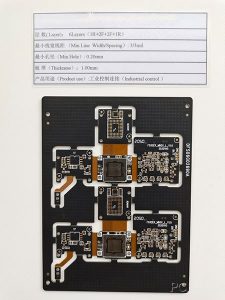How thin can rigid flex circuits be?
thin can rigid flex circuits
A PCB can be a delicate item to design, and the thickness of the circuit plays an important role in its functionality. PCBs must be made thin to allow flexing, and thicker circuits will add weight and space to the product. When a design is finalized, engineers and PCB manufacturing designers will work together to make the board to meet its desired application.
Rigid flex circuits are a flexible alternative to standard rigid PCBs, offering greater flexibility and reliability in complex applications. They are preferable where system miniaturization is essential, or when rapid or weak signals must be transmitted safely across critical environments. Rigid flex is also more aesthetically pleasing than traditional PCBs, and eliminates the need for extra connectors and cables.
While a rigid flex circuits is designed to be durable, it can still experience significant amounts of stress during its operation. To avoid damage, it is vital to understand how the flex circuit can be manipulated to avoid stresses that could cause the copper to break or short. A flex circuit can be made even more durable by following some key best practices, such as choosing the correct materials for its construction and using bend testing to simulate dynamic flexing to validate its flex life.

How thin can rigid flex circuits be?
The defining attribute of a flex circuit is its ability to fold and stretch without damaging the copper. This can be accomplished with a one-time crease or a multi-time crease. The one-time crease method involves folding the flex circuit along its neutral axis, and is not designed to be unfolded or repositioned. This requires very thin flex materials and copper weights, and often includes the addition of pressure-sensitive adhesive near the creased area to keep the circuit folded in place. In a multi-time crease design, the circuit is designed to be repositioned and unfolded several times over its lifetime. A multi-time crease design requires more layers of the flex circuit, but it allows the copper to be placed in different positions on each refold. It also requires the use of a stiffener layer to maintain its rigidity.
When designing a flex circuit, there are many factors to consider that impact its durability and reliability. These include the bending radius, which must be defined and specified early in the design process to prevent the copper from being damaged at a given thickness. It is also important to use curved traces instead of straight ones to reduce the amount of stress on the circuit in a bend.
The copper thickness on a flex circuit is also affected by the starting coverlay adhesive. This material serves to both attach the flex circuit and encapsulate the spaces between adjacent traces, and is a major contributor to the overall thickness of the circuit. The end result is a high-performance circuit with robust electrical properties and the ability to withstand extreme environmental conditions. This makes it ideal for a variety of industries, including: